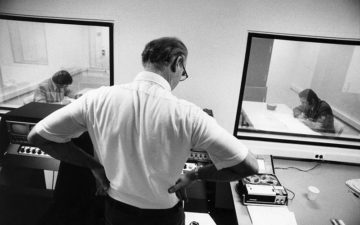 Gavin Evansi in Aeon:
Gavin Evansi in Aeon:
Thirteen days before the start of the Second World War, a 35-year-old unmarried immigrant woman gave birth slightly prematurely to identical twins at the Memorial Hospital in Piqua, Ohio and immediately put them up for adoption. The boys spent their first month together in a children’s home before Ernest and Sarah Springer adopted one – and would have adopted both had they not been told, incorrectly, that the other twin had died. Two weeks later, Jess and Lucille Lewis adopted the other baby and, when they signed the papers at the local courthouse, calling their boy James, the clerk remarked: ‘That’s what [the Springers] named their son.’ Until then they hadn’t known he was a twin.
The boys grew up 40 miles apart in middle-class Ohioan families. Although James Lewis was six when he learnt he’d been adopted, it was only in his late 30s that he began searching for his birth family at the Ohio courthouse. In 1979, the adoption agency wrote to James Springer, who was astonished by the news, because as a teenager he’d been told his twin had died at birth. He phoned Lewis and four days later they met – a nervous handshake and then beaming smiles. Reports on their case prompted a Minneapolis-based psychologist, Thomas Bouchard, to contact them, and a series of interviews and tests began. The Jim Twins, as they were known, became Bouchard’s star turn.
Both Jims, it transpired, had worked as deputy sheriffs, and had done stints at McDonald’s and at petrol stations; they’d both taken holidays at Pass-a-Grille beach in Florida, driving there in their light-blue Chevrolets. Each had dogs called Toy and brothers called Larry, and they’d married and divorced women called Linda, then married Bettys. They’d called their first sons James Alan/Allan. Both were good at maths and bad at spelling, loved carpentry, chewed their nails, chain-smoked Salem and drank Miller Lite beer. Both had haemorrhoids, started experiencing migraines at 18, gained 10 lb in their early 30s, and had similar heart problems and sleep patterns.
More here.
